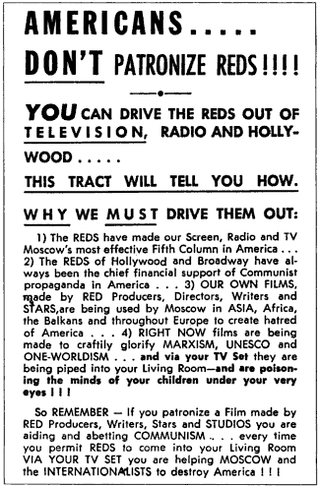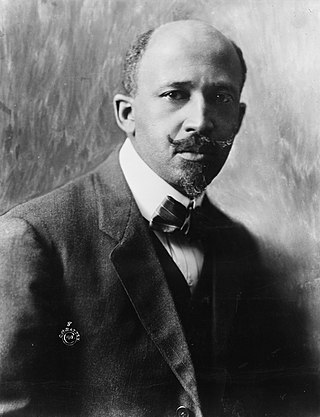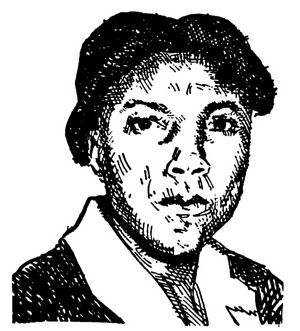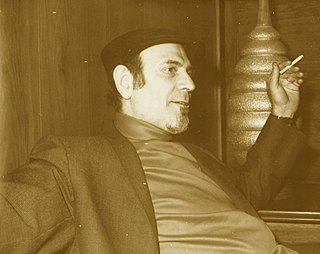Overview
The CRC used a two-pronged strategy of litigation and demonstrations, with extensive public communications, to call attention to racial injustice in the United States. A major tactic was publicizing cases, especially in the South, such as those of Rosa Lee Ingram and her two sons in Georgia, the Martinsville Seven in Virginia, and Willie McGee in Mississippi, in which Black people had been sentenced to death; in the last two cases as a result of questionable rape charges. Given the disenfranchisement of blacks in the South at the turn of the century, all-white juries were standard, as only voters could serve.
The CRC succeeded particularly in raising international awareness about these cases, which sometimes generated protests to the president and Congress. They also represented defendants in legal appeals to overturn convictions or gain lesser sentences. [1] At that time in the South, when cases were tried by all-white juries, some of the defense team believed that gaining a life sentence instead of capital punishment was akin to acquittal, where social pressure was high for juries to find blacks guilty. The CRC also defended political dissidents, including Communists. The group conducted high-profile protests in Washington, D.C., and at the United Nations. It brought world attention to racism in the United States by presenting the U.N. with a petition titled "We Charge Genocide," detailing the abuses of African Americans in the US, including continuing lynchings in the 1940s.
The CRC was perceived as an alternative or competitor to the National Association for the Advancement of Colored People (NAACP) because it worked on similar issues in representing African Americans in legal cases and suits. The CRC believed that it embraced a wider range of issues and a larger coalition. [2] It became involved in the defense of Rosa Lee Ingram and her sons, and Willie McGee.
In 1950, while the NAACP was working on appeals of the Martinsville Seven, who had all been convicted and sentenced to death in speedy trials, the parents of one defendant, DeSales Grayson, appealed separately to the CRC to defend their son. The NAACP contended that the organizations had different approaches; it spent more of its funds on direct defense of clients, including appeals, whereas the CRC mounted a public campaign, complete with distribution of pamphlets and advertising on billboards. [3]
Because the CRC had attracted adverse attention from the government, with the potential to negatively affect reception of appeals in the Martinsville Seven case, the CRC withdrew from direct defense of Grayson in July 1950. But, the NAACP was unable to succeed with its appeals. All seven of the men were executed in February 1951.
During the years of the Red Scare, due to its Communist Party affiliations, the CRC was classified as subversive and described as a communist front organization by US Attorney General Thomas Clark under President Harry S. Truman, as well as by the House Committee on Un-American Activities. Targeted by the U.S. government, the group was weakened in 1951, and it finally disbanded in 1956.
Labeled as Communist
Soon after it was founded, the CRC became a target of the House Committee on Un-American Activities (HUAC) and the Internal Revenue Service. [8] A 1947 report to HUAC charged: "Having adopted a line of militant skullduggery against the United States with the close of World War II, the Communist Party has set up the Civil Rights Congress for the purpose of protecting those of its members who run afoul of the law." [25] The group denied these charges and provided a list of sponsors, including Representatives Adam C. Powell, Senator Glen H. Taylor, and Atlanta University President Rufus Early Clement. [26] [27] Patterson called the group "non-partisan" and described it as "the Red Cross of the defenders of peace, constitutional rights, justice and human rights". [28]
The 1950 McCarran Internal Security Act increased government persecution of the group, and many of its leaders were jailed. The group's power weakened in 1951 when the federal government barred it from posting bail for communist defendants in the resulting trials. [29] [30] During the Second Red Scare, many Americans wary of the group because of its communist connections. [1] In 1956, the CRC was declared a communist front by the Subversive Activities Control Board. It disbanded the same year. [8] [10]
The CRC was also infiltrated by the Federal Bureau of Investigation. FBI agent Matt Cvetic, who had joined the Communist Party, testified to HUAC in 1950 that the CRC was Communist-controlled and that Patterson was a Communist. He also identified a long list of politicians as Communist, as well as celebrities and community leaders. [31] Various other agents surfaced to testify at anti-Communist trials. [32] [33] [34] Association with the Civil Rights Congress served as justification for FBI surveillance of Lena Horne and Paul Robeson. [35] One agent later described breaking into the CRC's Chicago offices, saying "Anything that had the name 'committee' or 'congress' the FBI assumed had to be subversive." [36]
David Brown, secretary and then chair of the Los Angeles chapter of the CRC, served as an FBI informant from 1950–1954. He disappeared in January 1955 and tried to fake his own kidnapping. [37] [38] Soon after, he unsuccessfully attempted suicide in a hotel room. [39] He later said he felt ashamed and suicidal for being a "stool pigeon". [40] [41] [42] He testified that his pay varied from $25/week to $250/month, and that he routinely lied to FBI contacts. [37] [43]

The American Civil Liberties Union (ACLU) is an American nonprofit organization founded in 1920 "to defend and preserve the individual rights and liberties guaranteed to every person in this country by the Constitution and laws of the United States". The ACLU works through litigation and lobbying and has over 1,800,000 members as of July 2018, with an annual budget of over $300 million. Affiliates of the ACLU are active in all 50 states, Washington, D.C., and Puerto Rico. The ACLU provides legal assistance in cases where it considers civil liberties at risk. Legal support from the ACLU can take the form of direct legal representation or preparation of amicus curiae briefs expressing legal arguments when another law firm is already providing representation.

McCarthyism, also known as the second Red Scare, was the political repression and persecution of left-wing individuals and a campaign spreading fear of alleged communist and Soviet influence on American institutions and of Soviet espionage in the United States during the late 1940s through the 1950s. After the mid-1950s, U.S. Senator Joseph McCarthy, who had spearheaded the campaign, gradually lost his public popularity and credibility after several of his accusations were found to be false. The U.S. Supreme Court under Chief Justice Earl Warren made a series of rulings on civil and political rights that overturned several key laws and legislative directives, and helped bring an end to the Second Red Scare. Historians have suggested since the 1980s that as McCarthy's involvement was less central than that of others, a different and more accurate term should be used instead that more accurately conveys the breadth of the phenomenon, and that the term McCarthyism is now outdated. Ellen Schrecker has suggested that Hooverism after FBI Head J. Edgar Hoover is more appropriate.
The Communist Party USA, ideologically committed to foster a socialist revolution in the United States, played a significant role in defending the civil rights of African Americans during its most influential years of the 1930s and 1940s. In that period, the African-American population was still concentrated in the South, where it was largely disenfranchised, excluded from the political system, and oppressed under Jim Crow laws.
The American Crusade Against Lynching (ACAL) was an organization created in 1946 and headed by Paul Robeson, dedicated to eliminating lynching in the United States. A strong advocate of the Civil Rights Movement, Robeson believed "a fraternity must be established in which success and achievement are recognized and those deserving receive the respect, honor and dignity due them." In his speech "The New Idealism", delivered as a Rutgers College valedictory address, Robeson supported the idea that all – both colored and white people – need to take part in the creation of the new "American Idealism"; which led to the development of the American Crusade Against Lynching.

We Charge Genocide is a paper accusing the United States government of genocide based on the UN Genocide Convention. This paper was written by the Civil Rights Congress (CRC) and presented to the United Nations at meetings in Paris in December 1951.
The Trenton Six is the group name for six African-American defendants tried for murder of an elderly white shopkeeper in January 1948 in Trenton, New Jersey. The six young men were convicted in August 1948 by an all-white jury of the murder and sentenced to death.

Harry Tyson Moore was an African-American educator, a pioneer leader of the civil rights movement, founder of the first branch of the National Association for the Advancement of Colored People (NAACP) in Brevard County, Florida, and president of the state chapter of the NAACP.

Willie McGee was an African American man from Laurel, Mississippi, who was sentenced to death in 1945 and executed on Tuesday, May 8, 1951, after being controversially convicted for the rape of a white woman on November 2, 1945. McGee's legal case became a cause célèbre that attracted worldwide attention, as it was roundly decried as a miscarriage of justice in the Jim Crow south.
Manning Rudolph Johnson AKA Manning Johnson and Manning R. Johnson was a Communist Party USA African-American leader and the party's candidate for U.S. Representative from New York's 22nd congressional district during a special election in 1935. Later, he left the Party and became an anti-communist government informant and witness.

The National Association for the Advancement of Colored People (NAACP) is a civil rights organization in the United States, formed in 1909 as an interracial endeavor to advance justice for African Americans by a group including W. E. B. Du Bois, Mary White Ovington, Moorfield Storey, and Ida B. Wells. Over the years, leaders of the organization have included Thurgood Marshall and Roy Wilkins.

Conrad Joseph Lynn was an African-American civil rights lawyer and activist known for providing legal representation for activists, including many unpopular defendants. Among the causes he supported as a lawyer were civil rights, Puerto Rican nationalism, and opposition to the draft during both World War II and the Vietnam War. The controversial defendants he represented included civil rights activist Robert F. Williams and Black Panther leader H. Rap Brown.
The Martinsville Seven were a group of seven African-American men from Martinsville, Virginia, who were all executed in 1951 by the state of Virginia after being convicted of raping a white woman. At the time of their arrest, all but one were between the ages of 18 and 23. They were quickly tried in six separate trials, and each was convicted and sentenced to death. It was the largest mass execution for rape that had been reported in the United States. On August 31, 2021, the Governor of Virginia pardoned the convictions of all seven men, 70 years after their deaths.
Council for United Civil Rights Leadership (CUCRL) was an umbrella group formed in June 1963 to organize and regulate the Civil Rights Movement. The Council brought leaders of Black civil rights organizations together with white donors in business and philanthropy. It successfully arranged the August 1963 March on Washington for Jobs and Freedom with the Kennedy administration.
The International Labor Defense (ILD) (1925–1947) was a legal advocacy organization established in 1925 in the United States as the American section of the Comintern's International Red Aid network. The ILD defended Sacco and Vanzetti, was active in the anti-lynching, movements for civil rights, and prominently participated in the defense and legal appeals in the cause célèbre of the Scottsboro Boys in the early 1930s. Its work contributed to the appeal of the Communist Party among African Americans in the South. In addition to fundraising for defense and assisting in defense strategies, from January 1926 it published Labor Defender, a monthly illustrated magazine that achieved wide circulation. In 1946 the ILD was merged with the National Federation for Constitutional Liberties to form the Civil Rights Congress, which served as the new legal defense organization of the Communist Party USA. It intended to expand its appeal, especially to African Americans in the South. In several prominent cases in which blacks had been sentenced to death in the South, the CRC campaigned on behalf of black defendants. It had some conflict with former allies, such as the NAACP, and became increasingly isolated. Because of federal government pressure against organizations it considered subversive, such as the CRC, it became less useful in representing defendants in criminal justice cases. The CRC was dissolved in 1956. At the same time, in this period, black leaders were expanding the activities and reach of the Civil Rights Movement. In 1954, in a case managed by the NAACP, the US Supreme Court ruled in Brown v. Board of Education that segregation of public schools was unconstitutional.

Rosa Lee Ingram was an African American sharecropper and widowed mother of 12 children, who was at the center of one of the most explosive capital punishment cases in U.S. history. In the 1940s, she became an icon for the civil rights and social justice movement.

Martin Armstrong Martin was an American criminal and civil rights attorney from Danville, Virginia who became the first African American trial attorney in the United States Department of Justice on May 31, 1943. He also became known for his appellate work for Odell Waller in 1942 and the Martinsville Seven in 1950-1951, and as a partner with Oliver Hill and future federal judge Spottswood Robinson in a law firm which assisted the National Association for the Advancement of Colored People in civil rights litigation in Virginia.
The International Juridical Association was an association of socially minded American lawyers, established by Carol Weiss King and considered by the U.S. federal government as "another early (communist) front for lawyers. The principal concern about the IJA was that it "constituted itself an agent of a foreign principal hostile to the interests of the United States."
Joseph Forer was a 20th-century American attorney who, with partner David Rein, supported Progressive causes, including discriminated communists and African-Americans. Forer was one of the founders of the National Lawyers Guild and its DC chapter. He was also an expert in the "Lost Laws" of Washington, DC, enacted in 1872–1873, that outlawed segregation at business places.
Defending Rights & Dissent (DRAD) is a national not-for-profit advocacy organization in the United States, dedicated to defending civil liberties, exposing government repression, and protecting the right of political dissent. DRAD was formed as the merger of the Defending Dissent Foundation (DDF) and the Bill of Rights Defense Committee (BORDC). DRAD is currently active in defending the right to protest, opposing political surveillance, and campaigning against the prosecution of national security whistleblowers.

John Gilman was an American activist and World War II veteran. He first became involved in unionism and left-wing politics in high school in the 1930s. In 1956 he was subpoenaed to testify before the House Un-American Activities Committee. He later campaigned for civil rights and desegregation in Milwaukee, which resulted in the 1966 firebombing of his flooring business by the Grand Dragon of the Illinois Ku Klux Klan. Gilman advocated for improved ties to Cuba and promoted freedom for the Cuban Five. He was also a leader of the Milwaukee Coalition for Peace and Justice and a board member of the Wisconsin Action Coalition.










